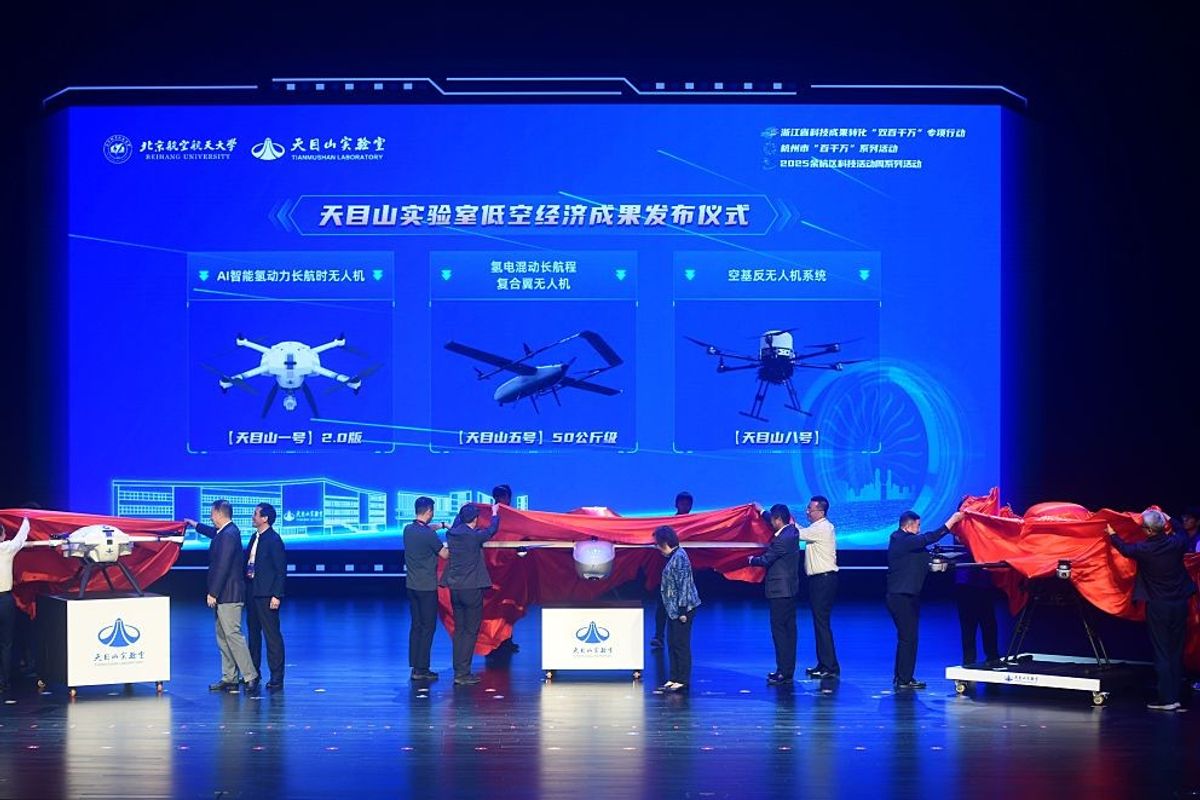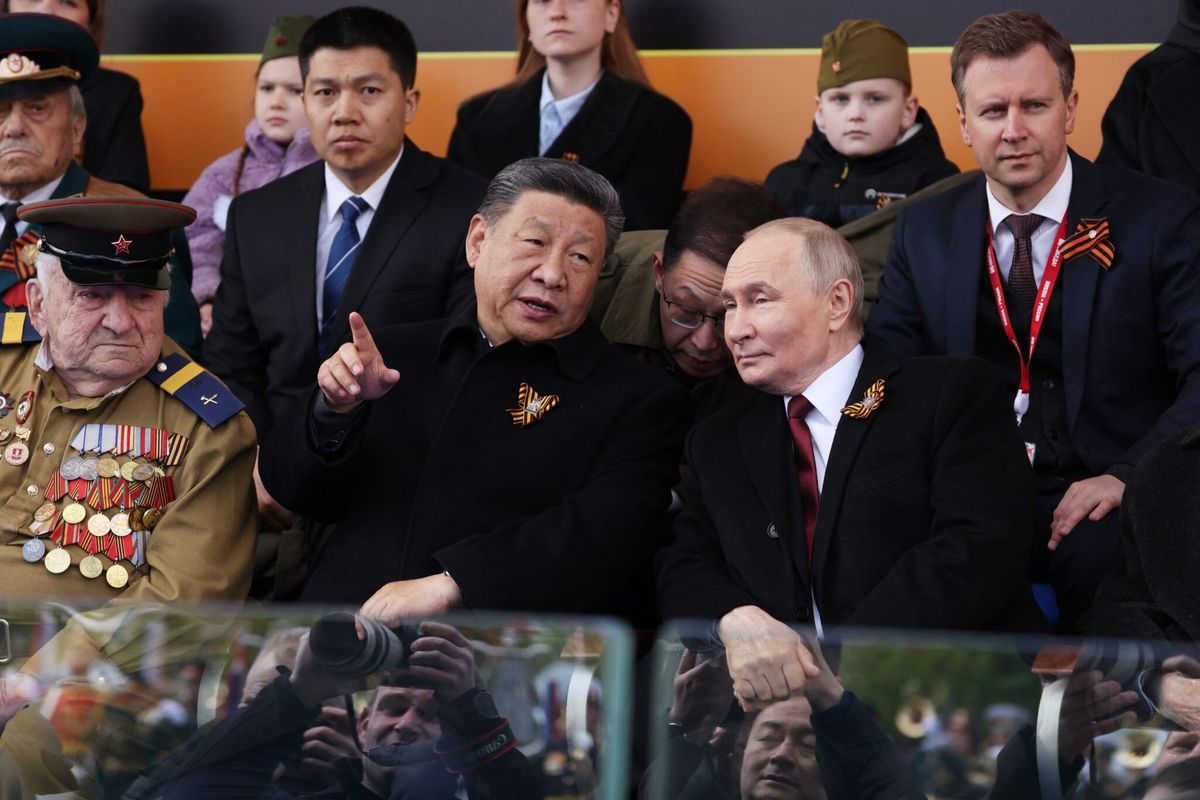SUBSCRIBER+ EXCLUSIVE REPORTING — As Russia and China put on a show of force in the Arctic, security officials are voicing concerns over NATO's readiness to counter the threat.
"While still less than during the Cold War, increased Russian military activity and modernized capabilities in the Arctic have shifted the balance of power," Walter Berbrick, a military analyst and former Senior Arctic Policy Adviser to the Secretary of the Navy, told The Cipher Brief. “Unlike during the Cold War, however, Russia is a different and increasingly more unpredictable actor now."
U.S. officials say Russia’s military buildup in the Arctic is raising red flags, prompting the Pentagon to rethink its strategy and funding for the region.
“Russia has a heavy emphasis on the Arctic, and over half of (the Arctic) is in Russian territory,” Iris Ferguson, Deputy Assistant Secretary of Defense for Arctic and Global Resilience, said earlier this year. “I don’t want to suggest they don’t have a place there. But we are concerned about increasing levels of investment in Arctic military capabilities."
That concern has also grown because of the impact of climate change, which experts say has played a role in the militarization of the region. As more Arctic glaciers melt, sea routes have become more navigable, leading to an increasing number of countries turning their attention to the Arctic’s maritime passages.
"Although melting sea ice makes the region more accessible, it also makes Arctic states more vulnerable,” Ethan Wong, Research Fellow at the Center for Climate and Security, told The Cipher Brief.
“The increasingly navigable waters provide opportunities, such as maritime shipping, but also create new areas to surveil previously protected by natural defenses," Wong said. “Climate change opens the Arctic to new actors and more military and economic activities.”
Why the Arctic matters
The Arctic region - defined as the Arctic Ocean and any land within the Arctic circle - holds 30 percent of the world’s untapped natural gas and 13 percent of latent petroleum reserves. The region’s mineral resources - including iron ore, copper, nickel, zinc phosphates and even diamonds - have been valued as high as $1 trillion.
Those riches alone make the region a tempting target, but there are security implications, too. The Arctic's role as a potential avenue of attack has loomed large since the Cold War.
"The Arctic is critical for defense as the region is generally the shortest distance between the U.S. and Eurasia, making it an appealing attack vector for adversaries," Wong said.
During the Cold War era, Soviet bombers and missiles were a threat, prompting the U.S. and Canada to form the North American Aerospace Defense Command (NORAD) in 1958 and build a network of radars and bases across the region. That legacy infrastructure remains crucial today, as the Arctic continues to be a strategic approach for potential adversaries.
Russia’s Arctic footprint
Security experts have been warning about Russia’s Arctic ambitions for more than a decade. In recent years, Moscow has constructed more than 475 military facilities in the Arctic Ocean – including bases, airfields, electronic warfare infrastructure and coastal defense systems.
Russia’s Northern Fleet, based in the Arctic city of Severomorsk, is home to more than 30 surface ships and more than two dozen submarines - including nuclear submarines and others that carry long-range cruise missiles capable of reaching Canada and the U.S. Russian President Vladimir Putin directed the submarines to engage in extensive drills shortly after Russia’s invasion of Ukraine in early 2022.
Overall, Russia has one-third more dedicated military facilities in the Arctic than NATO, according to data from the International Institute for Strategic Studies (IISS). Reuters reported that it would “take the West at least 10 years to catch up with Russia’s military in the region, if it chose to do so.”
“What Russia is doing in the Arctic is concerning because Russia is developing the capability to enforce what it perceives to be their rightful Arctic zone,” Marisol Maddox, senior Arctic Analyst at the Polar Institute of the Woodrow Wilson International Center for Scholars, told The Cipher Brief. “Russia is developing advanced weapons which they test in the Arctic,” she added. “They are rapidly militarizing the region in a way that could be used offensively.”
Beyond its military muscle in the Arctic, Russia has made expansive territorial claims to the region, including the North Pole and the vital Northern Sea Route, a shipping lane that dramatically cuts travel distances between Asia and Europe. The UN’s Commission on the Limits of the Continental Shelf has heard those claims - on territory claimed by Denmark and Canada as well - and found most of them valid, based on the vast area of Russian land that sits within the Arctic Circle. The UN commission’s judgments are only recommendations, however; nations are ultimately left to negotiate among themselves.
According to Derek Chollet, the Counselor of the U.S. State Department, some of the Russian claims are illegal, but Wong says that when it comes to the Northern Sea Route, “the US has limited options to challenge Russia's control.” The U.S. has never ratified the UN’s Law of the Sea Treaty, leaving it on the sidelines of the disputes, and Wong noted that while the U.S. could send ships to the passage, in a challenge based on freedom of navigation in international waters, “such an operation would be a direct confrontation given the proximity of the route to Russian territory.”
Meanwhile, the Arctic Council, an eight-nation group of Artic states that works on jurisdictional issues, suspended operations in March 2022 to protest Russia’s invasion of Ukraine.
The China Factor
Last year, Russia strengthened its influence in the region by forming an Arctic partnership with China, focused on developing infrastructure along the Northern Sea Route.
China and Russia have already built a closer relationship since the February 2022 invasion of Ukraine; analysts see their Arctic collaboration as one more sign of deepening their economic and strategic ties. China and Russia have conducted joint Arctic exercises twice in the last 20 months and expressed a shared interest in exploiting the resources of the polar region.
"Despite being a non-Arctic state,” Wong said, “China is a serious actor in the region and has engaged in economic, scientific, diplomatic, and military activities to gain access and influence in the Arctic to achieve its ambitions of becoming a polar power.”
China may be a “non-Arctic state” – it’s hard to consider it anything else, given its geography – but today the regime says China is a "near Arctic nation." While China currently lacks the brawn to project significant military force into the Arctic, experts believe Beijing is actively seeking a bigger say in how the region is governed and secured. Some of those experts fear the Chinese interest reaches beyond natural resources to the possibility of a future military presence.
“China's activities and presence in the Arctic have the potential to be used for military, intelligence, and gray-zone applications,” Wong said. He noted that Chinese buoys in the Arctic that monitor ice sheets can also be used to track US submarine movement. “Chinese research vessels can conduct polar research but also subsea reconnaissance.”
China is also currently building three icebreakers, a move aimed at unlocking the Northern Sea Route for commercial shipping and further strengthening economic ties with Russia.
NATO’s Arctic disadvantage
Some security analysts have expressed concerns that Washington and its NATO partners are ill-equipped to counter a Russia/China threat in the region.
While the recent inclusion of Finland and Sweden into NATO has been widely recognized as a pivotal moment in bolstering deterrence measures against Russia in the north, both countries have traditionally directed their strategic focus towards the Baltic Sea region rather than the Arctic. Remarkably, within NATO member states, there are currently no ice-breakers outfitted with both the anti-aircraft and anti-submarine defenses that Russia possesses.
Norway has ice-capable coast guard vessels, but they pale compared to Russia's extensive fleet. Norway's fleet, designed for coastal defense with smaller, faster ships, reflects a different strategic purpose; Norway prioritizes a smaller, agile fleet for specific defensive needs and collaboration within NATO, while Russia focuses on projecting power and securing its Arctic dominance.
Other NATO powers, including the U.S., have placed an emphasis on developing capabilities for different domains, such as the Indo-Pacific and Baltic Sea regions.
For the last several months, NATO members have been participating in Steadfast Defender 2024, the largest military exercise the alliance has conducted since the Cold War. The exercises have unfolded across Europe, but they have included maritime exercises and amphibious assault training in the North Atlantic and Arctic waters.
“The numerous exercises in the Arctic are key for training and strengthening cold-weather operations, but they also have important signaling and deterrence functions,” Wong said. The exercises have included testing of new weapons and all-terrain vehicles in sub-zero temperatures, in addition to operations designed to increase combat readiness in the harsh elements of the Arctic.
The U.S. published its latest National Arctic Strategy in 2022, a blueprint for addressing the opportunities and challenges in the region. The strategy outlines a blend of priorities, from security to economic development to combating climate change.
In terms of the Russian and Chinese threats, the U.S. pledged in the document to upgrade its Arctic early-warning and surveillance systems, and highlighted Russia's efforts to strengthen its military presence and control over Arctic resources, as well as China's growing economic and political activities in the Arctic.
Liselotte Odgaard, a senior fellow at the Hudson Institute, says that while Russia and China have raced ahead in the region, NATO still lacks a comprehensive Arctic strategy.
“Its current area of responsibility extends only to the ‘High North,’ a less ambitious term that describes the ice-free parts of the Arctic,” Odgaard wrote in Foreign Policy. “The term is indicative of disagreement within NATO over whether its remit goes beyond the North Atlantic.”
She also stressed the point about NATO’s shortfalls in terms of high-end maritime equipment: “No NATO member state has ice-strengthened ships with both anti-aircraft and anti-submarine capabilities.”
Berbrick said that the growing political tensions between the West and Russia have only raised the risks of conflict in this strategic pocket of the planet – a place that was once an area of cooperation between Russia and the West.
"The Arctic region provides Russia and the West with so many opportunities for dialogue, coordination and even cooperation," Berbrick said. “Needless to say, what was once a window of opportunity is now a closed door. The difficult balance for Allied forces and our competitors is to apply military power through day-to-day competition in a way that protects vital national interests and preserves regional security without undermining trust and triggering conflict."
Read more expert-driven national security insights, perspective and analysis in The Cipher Brief because National Security is Everyone’s Business.













